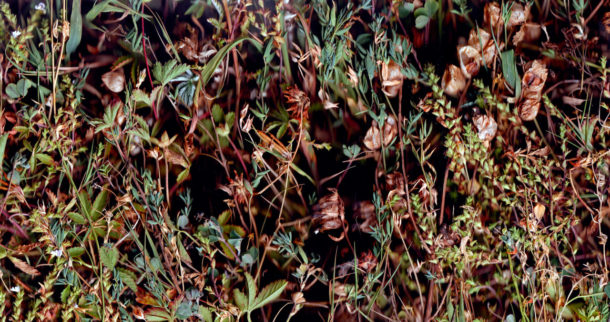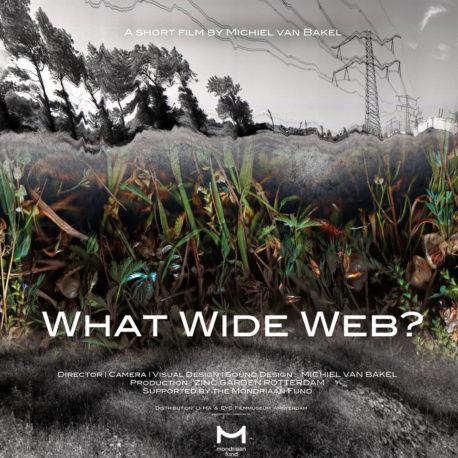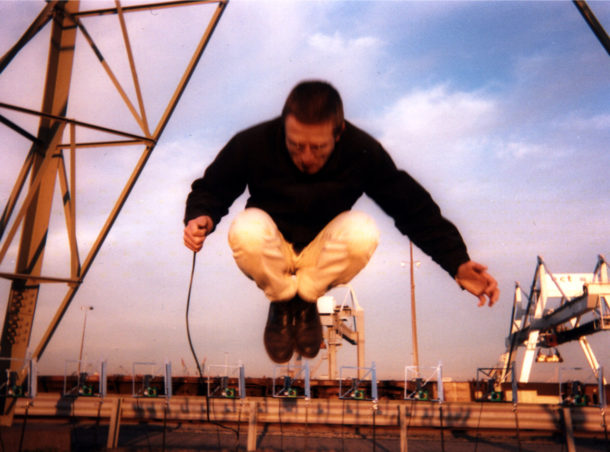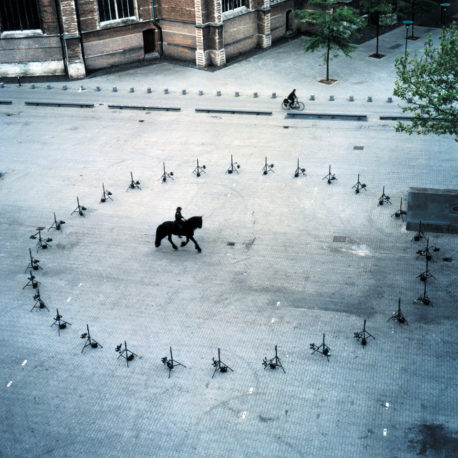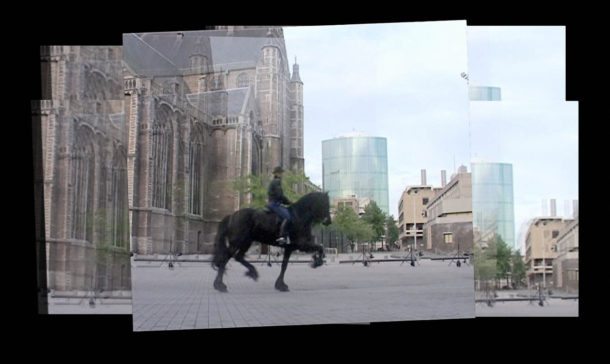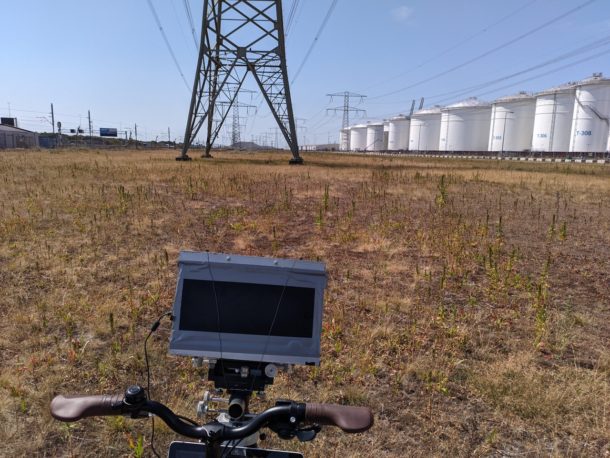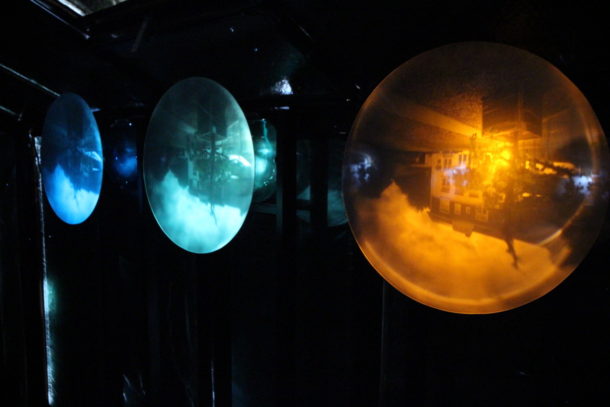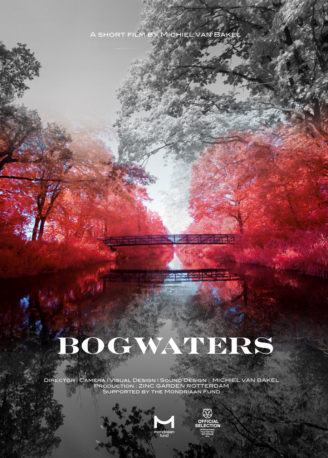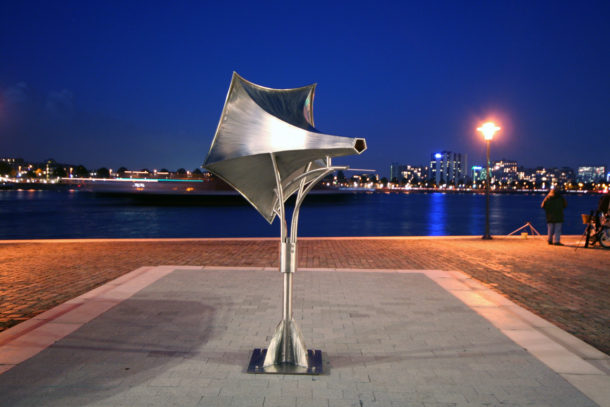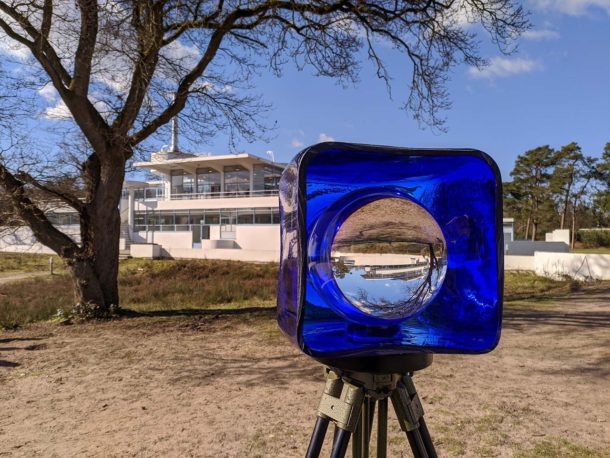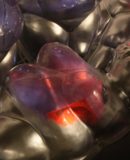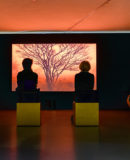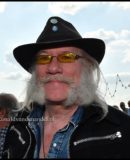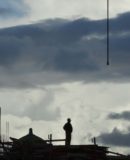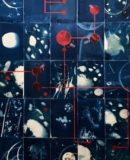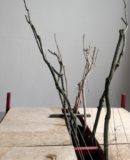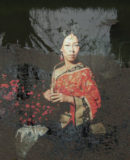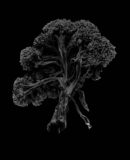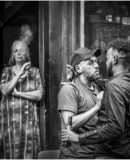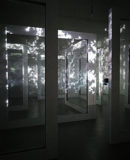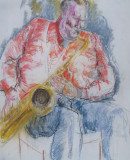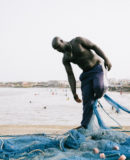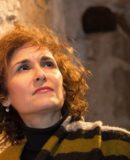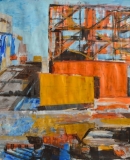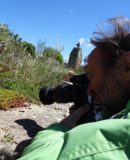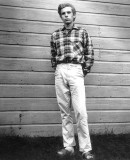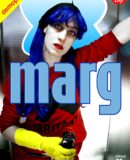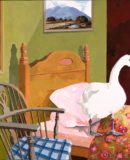World Fine Art Professionals and their Key-Pieces, 415 - Michiel van Bakel
World Fine Art Professionals and their Key-Pieces, 415 – Michiel van Bakel
In the HAL Archive, Herman Lamers’ art project in Rotterdam, I saw a slowly moving image of a seemingly uninteresting piece of nature; a wild grassy plain, with besides grass, all sorts of small plants and flowers. The image went down very slowly and new surprises appeared every time.
It was the video work What Wide Web by Michiel van Bakel. On a futuristic bicycle with a self-built camera that records everything in front of the handlebars, Van Bakel captured the surreal wasteland of Rotterdam’s Maasvlakte under the high-voltage pylons.
Light blue glass cube
I see the camera when I visit Michiel, in his studio in the Nieuwe Westen area of Rotterdam. In the front room of his studio I see a light blue glass cube with rounded corners. It has a large opening. It also turns out to be a camera, a ‘pinhole camera’. The opening is the lens. When he wants to take a picture, he inserts a piece of photosensitive paper soaked in chemicals.
It all started around the age of 11, when he got a camera set, he says. “It was a super 8 camera. I cut and played with the images, made a simple animation, a magical feeling.” Some time later, at the Arnhem Art Academy, he was still fascinated by the moving image. “I wanted to capture time and movement.”
Floating spinning
At that time, photography made the switch from analog to digital. He worked with many cameras at the same time, 32 to be exact, and released them all at the same time. In Hovering over Wasteland (1998) we see a first result. Between the high-voltage pylons you see a young Michiel spinning around like a helicopter, with the release button in his right hand.
In Equestrian (2003) he made a horse float around in a circle. Also with 32 cameras. We see the horse arrive on the square at the Laurenskerk, and then it happens: the heavy, Friesian horse, with a policewoman on it, starts to float. Michiel: “It is reminiscent of the work of Muybridge, the English photographer, in the 1860s. Another thought that played a role here was the increasing surveillance in the neighborhood where I lived, with surveillance cameras everywhere.”
In addition to the Arnhem Academy, Michiel attended the Free Academy Psychopolis in The Hague, where he came into contact with experimental filmmaker Frans Zwartjes. There he also met Reinier van Brummelen, who later helped him edit Equestrian.
Camera obscura
His work developed into an increasingly layered complexity. An example is Hortus (2013) in which a magnolia tree was filmed with 20 cameras. At one point it was so layered that he was constantly behind the computer. When he was able to darken a room eight years ago during a residency in Zierikzee, with only a small hole in the light, he realized the possibilities for his own work. The incident light cast an image of the outside world on the opposite wall, but upside down. “It was very basic, I walked into a camera myself. I decided: I’m going back to basics, the camera obscura.”
When he wanted to have a lens made, he ended up at the Glass Museum Leerdam. With old glass blowing techniques he made, with the Glass Museum, an all-glass camera. “There is a theory that there were special, large lenses in the 16th century: glass objects filled with liquid. For example, a semi-circular bottle was flattened and then filled with water. I developed and used such a lens in consultation with the glassblowers.”
Seen through this kind of lens, he made various films of the rugged nature of the Maasvlakte, formerly the nature reserve ‘De Beer’, on his futuristic bicycle. When registering by bicycle turned out to be too fast, he went for a walk with the bicycle. The plant film I saw in Het Archief consisted of 400 separate scans, which moved a bit each time. He also applied morphing, the gradual blending of one image into another. “It was super interesting, weird things happened, especially when the algorithm doesn’t work out and the computer creates bizarre intermediates.”
De Peel movies
After using the self-blown lenses for a while, he started using a normal lens again. Including the Peel films that were shot in the nature reserve De Peel (Bogwaters). He is playing a film that is still being edited on the big screen in his workspace.
It is a trip on one of the canals in De Peel, where the cameras were in the front of a canoe, a scanner camera and an infrared camera. He wants to make the film interactive, he says. “The interactivity works with sonar, like a bat exploring its environment. As the viewer gets closer, the image changes. Very close, the image becomes infrared.” The canals were once dug to transport the peat. In the Second World War it was part of the Peel-Raamstelling, a defense line of the Dutch. Michiel grew up in this area and he still has family memories of this area. “My grandfather was killed dismantling a German tank gun turret that had been left behind on his land near where this film was shot. In doing so, he got a spring through his head under great pressure from oil.”
Nature reserve De Peel grew full of trees, due to the nitrogen precipitation and because the water level was lowered at the request of the farmers in the area; now the water level is being raised and the original swamp is slowly returning.
Key work
Does Michiel have a key work, and if so, what work is that? He has. It’s Hovering over Wasteland from 1998. “The work I made with 32 disposable cameras. All of them would click at the same time. I had no idea what it would look like. The best thing there is when you can surprise yourself. “
Artistic family
Michiel comes from a very creative family. His mother made tapestries and dolls and his father, Gerrit van Bakel, was an artist by profession. He was called “the doyen of technologically inspired art”. “His art was not only kinetic, but also conceptually well thought out and rich in visual language. A lot of technology has been incorporated into it. He made devices that work on the expansion of metals or oil under the influence of natural forces (from the sun). The story of The Tarim Machine is set in the Gobi Desert. There in the desert it would move a few millimeters a day. The Utah machine would be on the other side of the earth, on a salt flat in Utah. The machines have been in many museums and at the Documenta Kassel 1982, but never in the respective deserts.” See also http://www.gerritvanbakel.org/
Furthermore, no less than eight family members were artistically active, from graphic artist, composer and photographer to needle artist, several painters and an art blacksmith. Yet Michiel did not immediately start the art academy. He started studying psychology, and then switched to astronomy. And only then did he end up at the Art Academy. “I took elements from both studies that I now use and apply in my work: psychology is about observation, among other things, and that is central to my work, just like in astronomy where the lens, timekeeping, distortions and observation are very important. ”
Cosmic Debris
We walk to the front room. In one corner I see the artwork Cosmic Debris, a piece of iron meteorite swinging on a long wire, the movement is caused by the magnetic field of a seismograph at the bottom. The meteorite also reacts to the presence of people, I notice, and even to passing traffic outside.
And I see a small model of his sculpture Diabolo (1996). The large statue made of stainless steel and polyester is located in Rolde in the province of Drenthe. “Everything moves and the core stays still.” And there is a small ship’s horn with which you can also listen to ships which stands in big format along the Maas river in Rotterdam.
What is his experience of art life?
“It’s a good way to be a free person, even if it’s stressful at times. Fortunately, I have support through grants and occasional sales. To earn my living I’m an art handler at periods, that is say that I am part of a team that hangs paintings on the wall for an exhibition and packs them up again afterwards. For some time now I have been part of the ‘hanging team’ of Museum Boijmans, Stedelijk Museum Amsterdam and the Kunsthal Rotterdam. It’s wonderful to live in Rotterdam anyway with all those museums, including the Depot, New Institute, etc. There are also great initiatives, such as what Herman Lamers is doing at Het Archief.”
We walk upstairs. In his living room I see Sanatorium Zonnestraal in cyanotype, captured with a glass camera in a primitive way and then enlarged, and in the other room the Van Nelle factory using the same procedure. The Rietveld Schröder House will be next.
Finally, what is his philosophy?
“DIY, Do It Yourself. Or to paraphrase Nike, the Goddess of Victory: Just do it yourself.”
Images
1) What Wide Web, 4096×2160, 2) What wide web poster, 3) hovering over wasteland 2, 4) Equestrian, 2003, Photo Ann Pettersson, 5) Michiel van Bakel, Equestrian, 6) soil and green, what wide web, making of – scaled, 7) M van Bakel B Walk In Cam Obscura, 8) Bogwaters poster, smallprint, 9) ship’s horn night , 10) making of Zonnestraal
https://www.michielvanbakel.nl/ https://www.zerp.nl/michiel-van-bakelhttps://ifthenisnow.eu/nl/verhalen/de-wereld-van-de-rotterdamse-kunstenaar-62-michiel-van-bakel
Disclaimer: The views, opinions and positions expressed within this guest article are those of the author Walter van Teeffelen alone and do not represent those of the Marbella Marbella website. The accuracy, completeness and validity of any statements made within this article are not guaranteed. We accept no liability for any errors, omissions or representations. The copyright of this content belongs to Walter van Teeffelen and any liability with regards to infringement of intellectual property rights remains with the author.

